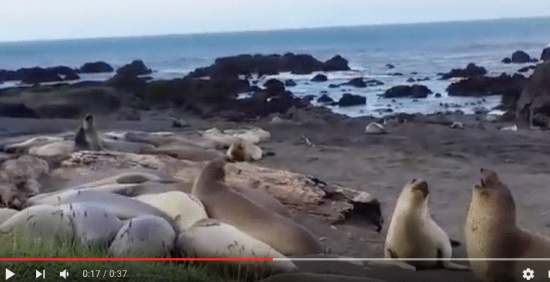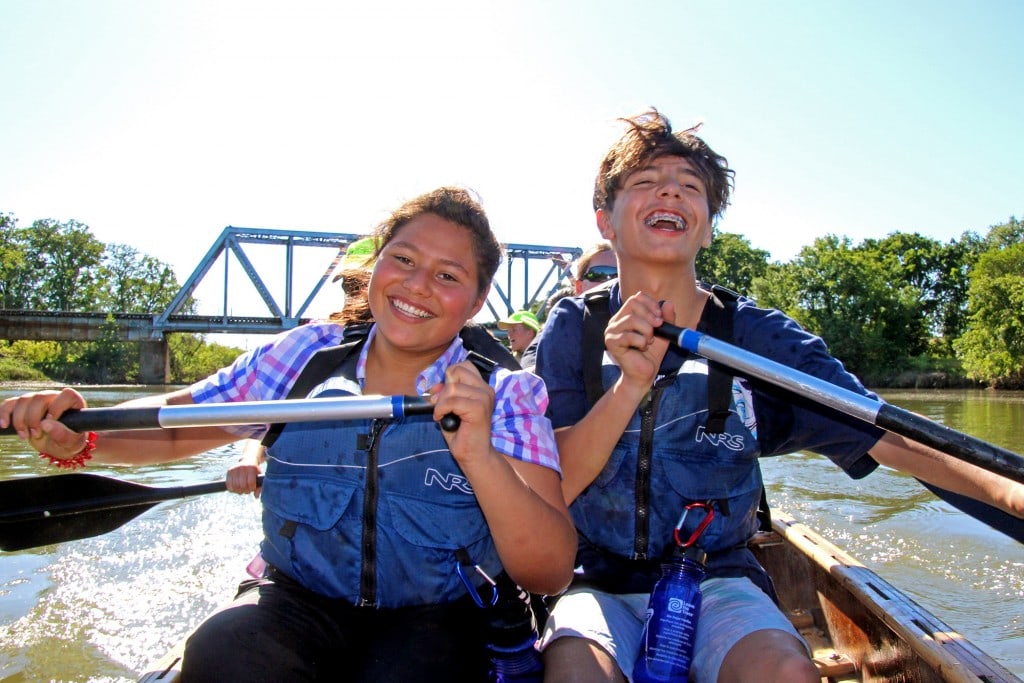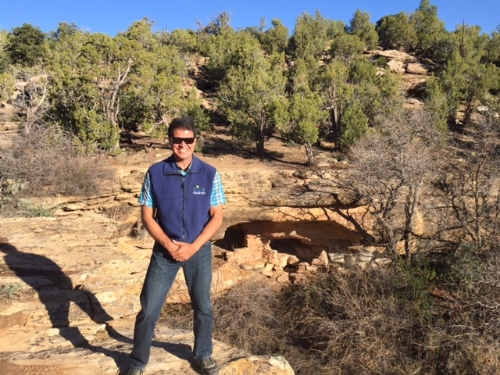
Amboy Crater, Mojave Trails National Monument
 |
|
|
|
|
|
|
|
- Discover the Coast
- Partnerships
- Headlines and Highlights
- BLM and DOI Highlights
- Wildlife Question of the Week
- Upcoming Events
|
|
|
|
DISCOVER THE COAST |
 |
Exploring California’s Marine Protected Areas: Sea Lion Gulch State Marine Reserve
Our mission: photograph Sea Lion Gulch State Marine Reserve (SMR), one of the most isolated marine protected areas (MPAs) in the state. As a marine reserve, Sea Lion Gulch enjoys the highest level of
protection among the state’s handful of MPA designations, with no extraction and/or damage of living or non-living resources permitted. (California Department of Fish and Wildlife Marine Applied
Reaserch blog)
|
 |
LA Times, May 6, 2016
Mendocino County has long been known as a hiker’s paradise, thanks to 90 miles of Pacific coastline, two dozen state and national parks, and 4,000 square miles of meandering streams and old-growth redwoods. In time for National Trails Day on June 4, two new hiking routes have
opened in the county. The first one — dubbed the Peter Douglas Coastal Trail in Shady Dell, Sinkyone Wilderness State Park — is 2.3 miles long and in the rugged and remote Lost Coast (the largest roadless coastal area in the continental U.S.) section of the King Range National
Conservation Area. Read full story
Related: Discover the Coast (BLM website)
|
 |
Video: An Up-Close Look at the New Elephant Seal Colony Along the Lost Coast Trail
Lost Coast Outpost, May 9, 2016
Check out these beautiful, gurgling elephant seals seen lounging along the Humboldt County coast last week. Read full story
|
 |
Wide Open Spaces
Carmel Magazine's Spring/ Summer Issue features Fort Ord National Monument and Fort Ord Dunes State Park (page 130-134). Read full story |
 |
Plover Tidings: A Nest by Any Other Name
Our coastal dunes are marvels of the natural world, and an integral piece of that ecosystem is snowy plovers. These ground-nesting shorebirds prefer to make nests on open beaches with low-growing, sparse
native vegetation; like sand verbena, beach evening primrose, and coast buckwheat. Scientists think the reasons for this are that there is room to make nests in bare sand, and the sparse vegetation gives plovers excellent visibility to keep an eye on potential predators. (USFWS Pacific Southwest Tumblr)
|
 |
Happy Mother's Day from the King Range National Conservation Area!
“Flowers for Mother’s Day… Here’s to all the beautiful, wonderful and lovely mothers that care for us and help us to grow.” (BLM California Facebook)
|
|
PARTNERSHIPS |
 |
24th Annual "Trail Days" Event
May 10-12 marked the 25th annual “Trail Days” event on the Paradise Ridge near Magalia,
California. “Trail Days 2016” is a cooperative effort between the Upper Ridge Wilderness Areas, BLM, Paradise Unified School District, California Conservation Corps Foundation, the Butte County
Fire Safe Council, Magalia Beautification Association and CAL FIRE. (BLM California Facebook)
|
 |
BLM Signs Partnership Agreement with Amah Mutsun Land Trust
On Thursday, May 26 the BLM Central Coast Field Office and the Amah Mutsun Land Trust will enter into a partnership agreement Memorandum of Understanding for the Coast Dairies Management Area on the north
coast of Santa Cruz County. At a "terrace with a view" by Warrenella Road. BLM staff will meet attendees at the Warrenella Road gate, located approximately one mile north of the town of Davenport on State Route 1. (BLM News Release)
|
 |
Partners Celebrate 25 years of Trail Building
Over 200 trail enthusiasts gathered at the Shasta Middle
Creek Historic Mining Park on May 7th, for the dedication of the Middle Creek Rock Creek trail system. Mountain bikers and hikers enjoyed checking out the new trails while enjoying food and music at the event. (News.Bytes
story)
|
 |
The California Conservation Corps will mark its 40th Anniversary this summer and has celebrations set for both Sacramento and Los Angeles. Many CCC alumni
— both corpsmembers and staff — are working for other agencies and the Corps would like to spread the word about its events. Thursday, June 30 in Sacramento, a ceremony will be held at noon on
the west steps of the State Capitol with exhibits from the different CCC centers as well. The CCC will honor its legacy partners, including the Bureau of Land Management. Thursday, July 7 in Los Angeles, a
ceremony will be held at 11:30 am at the Crystal Springs Picnic Area in Griffith Park. (News.Bytes story)
|
 |
In an effort to reduce illegal dumping on public lands, BLM California recently partnered with Waste Management of Nevada County and the Nevada County government to host a Tire
Amnesty event in Nevada County, California. County residents were permitted to dispose of a maximum of nine tires free of charge during the event; however, they could also receive a waiver from the county government to dispose of more tires. (News.Bytes story)
|
 |
Galt, California students: Eager to explore, passionate to learn
After three weeks amazing weeks in the Bay Area, Canoemobile headed over to Cosumnes River Preserve near Sacramento to paddle with every 6th grader in the Galt Joint Union School District as well as lead an
overnight for 7th and 8th graders. We introduced more than 500 Galt students to the varied ecosystems of the reserve managed by the Bureau of Land Management. (Wilderness Inquiry blog)
|
|
HEADLINES AND HIGHLIGHTS |
 |
Retired Bakersfield Field Office Biologist Amy Kuritsubo has received the Department of Interior Distinguished Service Award. “Throughout her 30-plus year career in the
public service, Ms. Kuritsubo has dedicated her knowledge and energy to serving public lands in California BLM’s Bakersfield Field Office,” the award says. (News.Bytes
story)
|
 |
NBC Southern California, May 7, 2016
Three Southern California desert landscapes that overlap to cover more than 1.8 million acres were designated as national monuments this week. A public
celebration held to laud Mojave Trails, Sand to Snow and Castle Mountains’ recent national monument designations brought out community leaders from across the country, who celebrated the lands’ increased federal protection. Read full story
Related: Celebrating New Desert Monuments (BLM California Flickr)
|
 |
San Bernadino County, May 8, 2016
A group of about 25 mostly environmentalists and high-level public lands managers bolted into the new Sand to Snow National Monument one afternoon last week… Jewell believes that outdoor experiences are part of the
DNA of humans and is concerned that today’s children are not getting out into the wildland frontiers of America. That’s why she believes the Obama administration’s “Every Kid in a Park” initiative is so important… Jewell spoke about the sedentary, urban
lifestyle of young people in America after she negotiated a log bridge over the rapidly flowing Whitewater River and nimbly danced around numerous rock obstacles. Read full
story
|
 |
Video: SLO County Supervisors vote to support expansion of California Coastal Monument
KCBX, April 5, 2016
A push to expand the California Coastal National Monument to include the Piedras Blancas Light Station in San Luis Obispo County, now has the full support of the County Board of Supervisors. Listen to radio segment
Related: Legislative Hearing (House Committee on Natural Resources website)
|
 |
Now that plans to pump underground water from deep in the Mojave Desert have survived a legal challenge, project developer Cadiz Inc. faces hurdles in delivering the water to
customers around Southern California. A state appeals court on Tuesday, May 10, upheld six rulings in the company’s favor on various environmental and procedural challenges. But Cadiz must now resolve two key issues before moving the $225 million project forward. Read full story
|
 |
Learn more about how scientists are working to save the vole. We are proud to be a part of the Amargosa Vole Conservation Project with our partners at Amargosa Conservancy, UC Davis School of Veterinary
Medicine and California Department of Fish and Wildlife. (Outdoor Nevada, Vegas PBS) |
|
BLM AND DOI HIGHLIGHTS |

|
Wild Horses and Burros on Public Rangelands Now 2.5 Times Greater than 1971 when Protection Law Was Passed
The BLM announced that as of March 1, 2016, more than 67,000 wild horses and burros are roaming Western public rangelands – a 15 percent increase over the estimated 2015 population. The updated numbers
show more than twice the number of horses on the range than is recommended under BLM land use plans. It is also two and a half times the number of horses and burros that were estimated to be in existence when the Wild and Free Roaming Horses and Burros Act was passed in 1971. To help address
the problem, BLM is seeking legislative authority for additional initiatives. (BLM News Release)
Related: Wild Horse and Burro Infographic (BLM website)
|

|
A Career Managing Public Lands: Q&A with Raul Morales
HECHO, May 4, 2016
Think your love of the land and wildlife can only be fulfilled in your free time? Think again. Protecting wildlife habitats and our outdoor spaces can be your full-time job if you work at a place like the Bureau of Land Management. That's what Raul Morales did – and with time and
hard work, he moved up the ladder of leadership and is now the Bureau of Land Management (BLM) State Deputy Director in Nevada. Read on to learn more about his story and why he thinks more Latinos should follow in his footsteps. Read full story
|

|
15 Facts About Our National Mammal: The American Bison
On May 9, 2016, President Obama signed the National Bison Legacy Act into law, officially making the American bison the national mammal of the United States. This majestic animal joins the ranks of the Bald Eagle as the
official symbol of our country — and much like the eagle, it’s one of the greatest conservation success stories of all time. In prehistoric times, millions of bison roamed North America — from the forests of Alaska and the grasslands of Mexico to Nevada’s Great Basin and the
eastern Appalachian Mountains. But by the late 1800s , there were only a few hundred bison left in the United States after European settlers pushed west, reducing the animal’s habitat and hunting the bison to near
extinction. Had it not been for a few private individuals working with tribes, states and the Interior Department, the bison would be extinct today. (Department of Interior blog)
|
 |
The Desert Sun, May 8, 2016
U.S. Department of the Interior Secretary Sally Jewell says keep it in the ground naive. Watch full
interview
|

|
One Big Piece Of Obama’s Legacy: A Park System That Looks Like All Of Us
The Huffington Post, May 8, 2016
President Barack Obama is expected to declare the Stonewall Inn a national monument in the coming weeks. Stonewall, located in Greenwich Village, New York, is known as the birthplace of the gay rights
movement. In June 1969, the bar’s patrons fought back against repeated harassment and police raids, sparking other riots and protests against the criminalization of gay people… The site will be the first national monument recognizing the gay rights movement, and it’s part of the
Obama administration’s ongoing effort to diversity the sites in the National Park System. Read full story
|
|
WILDLIFE QUESTION OF THE WEEK |
 |
Which of the following are true about the Pacific chorus frog (Pseudacris regilla)?
a) This frog is chiefly a ground-dweller, living among shrubs and grass typically near water.
b) They are the princes of the forest.
c) Brown body color absorbs more solar radiation which can be more beneficial in cold and aquatic habitats.
d) When disturbed, this frog typically shelters in place.
Keep reading for answer below
|
|
UPCOMING EVENTS |

|
May 14: Star Party
The Astronomical Society of the Desert will conduct “sky tours” and direct observations of the night sky through telescopes and giant binoculars at the Santa Rosa and San Jacinto Mountains National
Monument Visitor Center from 8:00 p.m. to 10:00 p.m. (Friends of the Desert Mountains website)
|
May 17: Public Invited to Free Lecture on Marine Research
North coast residents and visitors are invited to learn about ongoing marine research in a lecture titled, "Changing Conditions in our Coastal Waters." Brian Tissot will be presenting Tuesday,
May 17 at 7:00 p.m., at the Redwood Playhouse, 286 Sprowel Creek Rd., in Garberville. (BLM News Release)
|
May 18: Historic Route 66 Association to Host Economic Summit
The BLM California Desert District, in partnership with the California Historic Route 66 Association, will sponsor a Route 66 Economic Development Symposium on May
18 in Barstow. Experts from the tourism industry also will provide insight on how California communities can develop dynamic tourism portfolios to attract national and international visitors. Discussions also will recommend strategies how to promote Route 66 attractions, including museums, historic
buildings and other community attractions to enhance economic tourism development opportunities. (BLM News Release)
|

|
May 19 or May 21: Trinidad Seabird Citizen Science Project
Contribute to North Coast seabird conservation while learning about their biology. Humboldt State University professor Dan Barton and graduate student Shannon Murphy will help involve you in seabird
monitoring in the California Coastal National Monument this summer at the Trinidad Coastal Land Trust Office (Behind the Trinidad Library) on May 19 at 5:30 pm OR May 21 at 1:00 p.m. Visit www.northcoastseabirds.org for more information or contact HSU at 826-3584 or Ben Morehead at
677-2501, north.coast.seabirds@xxxxxxxxx.
|
May 20-21: Desert District Advisory Council
The next field trip and meeting of the BLM’s California Desert Advisory Council (DAC) will be held May 20-21 in Barstow. The council will
participate in a field tour of BLM-managed public lands on Friday, May 20 at 8:00 a.m. to 5:00 p.m., and will meet in formal session on Saturday, May 21 from 8:00 a.m. to 5:00 p.m. Final agendas for the Friday field trip, the Saturday business meeting and the Saturday business meeting location will be posted on the BLM California state website. The public is invited to participate in the Friday field tour but must provide their own transportation and meals. (BLM website)
|

|
May 21: La Quinta Nature Walks –“Explore Our National Monument: Celebrating 15 Years
|

|
June 3: Free Nighttime Photography Workshop - June 3
A free workshop entitled, "Nighttime Photography: Tips and Tricks," will be presented Friday, June 3 at 7:00 p.m., in the King Range National Conservation Area. Participants will meet at the King Range
Project Office, 768 Shelter Cove Rd., in Whitethorn to carpool to the workshop site. Participants will return to the office by 12:30 a.m. All are welcome; however, the focus will be for intermediate photographers with a digital single lens reflex (SLR) camera. Pre-registration is not required.
Participants should also bring a headlamp or flashlight, warm clothing, and water. (BLM News Release)
|
|
WILDLIFE QUESTION OF THE WEEK ANSWER |
|
Which of the following are true about the Pacific Tree Frog?
a) This frog is chiefly a ground-dweller, living among shrubs and grass typically near water.
This frog is chiefly a ground-dweller, living among shrubs and grass typically near water, but occasionally it can also be found climbing high in vegetation. Its large toe pads
allow it to climb easily, and cling to branches, twigs, and grass. The green body color absorbs more solar radiation which can be more beneficial in cold and aquatic habitats while the brown body color absorbs less solar radiation, which may be more beneficial in drier, hotter, more terrestrial
habitats. When disturbed, this frog typically hops a large distance or jumps into the water and swims into vegetation to hide. Source: CaliforniaHerps.com, a Guide to the Amphibians and Reptiles of California.
|
|
|

